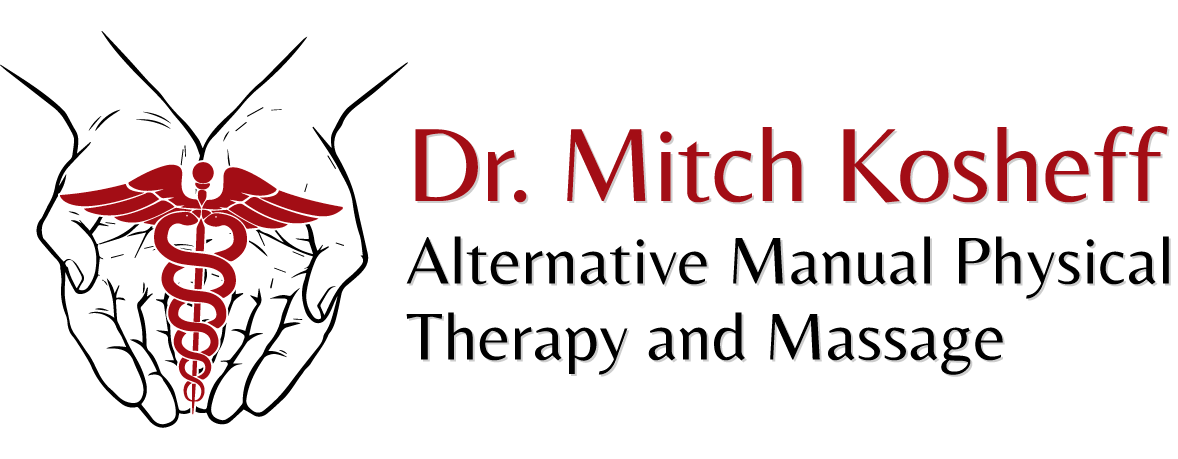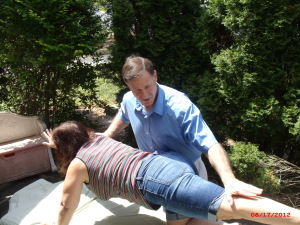When people think of exercise, the image is of going to the gym, lifting weights and working the body to fatigue. And when someone has an injury, or is recuperating from surgery, it seems counter intuitive to exercise a structure when in pain. However, the use of therapeutic exercise in physical therapy is extremely important for the healing of tissues. And when rehabilitating from an injury or surgery, its not just about strengthening. It about blood flow, the realignment of tissues, and the restoration of muscle firing patterns and movement patterns.
BLOOD FLOW
The blood is the taxi cab of the body. It transports nutrients to structures and takes waste products away to be filtered through other areas of the body. The rate of healing for any structure in the body is directly proportional to the amount of blood flow to that structure. Those areas of the body that get a lot of blood flow will heal relatively fast. Whereas, those areas of the body that gets little, or reduced blood flow will take a much longer time to heal. Our heart only accounts for a portion of blood flow. As the heart muscle contracts, it pushes blood to the arteries. The arteries have smooth muscle around them which contracts with the heart. Blood is then returned to the heart through veins. However, veins do not have smooth muscle around them. Veins return blood to the heart from the muscles around them contracting, squeezing the them to push blood back to the heart. So, when someone has an injury, or is recuperating from surgery and they are not moving their joints, there is reduced blood flow around that structure. And, the lack of muscle pumping action diminishes or stops the return of blood back to the heart resulting in a pooling of fluids. This impedes the healing process.
NEW FIBER FORMATION
During the healing process, the body makes new fibers and lays them onto the injured tissue. However, these new fibers are dropped into the injured tissues in a manner similar to “pixie sticks” being dropped onto the floor. The new fibers are laid down in a haphazard manner, being misaligned with the direction of the fibers of the injured structure. If left alone, the new fibers will form adhesions and restrictions, interfering and inhibiting with the proper functioning of healing structures.
ALTERED MUSCLE FIRING PATTERNS AND COMPENSATORY MOVEMENT
When muscles fire there is a very specific sequence of muscle fiber contraction that takes place. When an injury occurs in a joint or muscle, or after undergoing surgery there are changes in the pattern in which a muscle fires. This, in turn, forces other muscles around the injured structure to overwork and change the way in which a movement will occur; compensating for the injured structure. While an injured structure is healing, compensatory movements are normal and necessary. However, being as adaptable as our bodies are, these compensatory movement patterns and altered muscle firing patterns can remain long after healing has occurred. This alteration in muscle firing and movement patterns can lead to pain and injuries to other areas of the body over time due to over stress, as well as to a future re-injury of a previously injured structure.
THERAPEUTIC EXERCISE IN PHYSICAL THERAPY
Therapeutic exercise is used to gently “pump” muscles and move joints to induce blood flow. This will help injured structures to properly heal. Also, the gentle “pulling” on muscles will also help to realign the new tissues being laid down during the repair process; reducing scaring and adhesions. Therapeutic exercises also increases joint range of motion. Most of the major joints of the body have a lining around them call a “capsule”. And with immobilization the joint capsule, as well as other tissues around a joint, will allow for decreased joint range of motion. The use of therapeutic exercise activities can prevent potential capsular restrictions and increase joint range of motion. The use of therapeutic exercise activities can also help restore proper muscle firing patterns along with retraining proper movement patterns. There are different types of exercise activities.
TYPES OF REHABILITATIVE EXERCISE ACTIVITIES
Therapeutic exercises are exercise activities that include range of motion activities, stretching activities, and strengthening activities.
Neuromuscular Reeducation exercises are exercise activities that help with relearning balance, correcting of posture, and the normalization of proper muscle firing patterns and movement patterns.
Therapeutic (Functional) Activities are activities which include specific training in how to perform actual functional activities such as bending and lifting, shoveling, mopping floors, etc…, without causing pain, strain, or re-injury.
THERAPEUTIC EXERCISES NEEDS TO BE PROPERLY DOSED
It is important for therapeutic exercise activities to be properly dosed. And it is the physical therapist who is exclusively trained to provide this service. If exercise activities are performed too aggressively, then re-injury will occur causing inflammation, swelling, and increased pain. Aggressive exercise activities will also cause a set back and delay healing. On the other hand, if an exercise program is not properly progressed, then a plateau in status will occur. As tissues progress towards the end of the middle stage (second stage) of tissue healing, it is then that progression towards strengthening begins.
It is important to know that when one has an initial injury, that you want to employ the R.I.C.E. principle (Rest, Ice, Compression, & Elevation). This is anywhere from 1-3 days to 1-2 weeks, depending upon the severity of the injury. Then, it is imperative to begin therapeutic exercise activities. Also important to note is that exercise activities should NEVER HURT. There are some activities that cause some discomfort, such as stretching, however, exercise activities should never increase pain. The concept of “No Pain, No Gain” never applies.
So, the use of therapeutic exercises are not just for strengthening. Its about blood flow, prevention and reduction of scar tissue and adhesions, and the re establishment of muscle firing patterns and movement patterns.
If you live in Ocean county, NJ, Monmouth county, NJ, or eastern portions of Mercer county, NJ and are having pain from a recent injury, read through my website at: www.drmitchpt.com. Then give me a call to discuss your condition.


